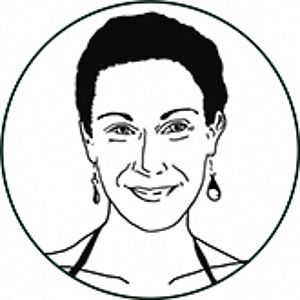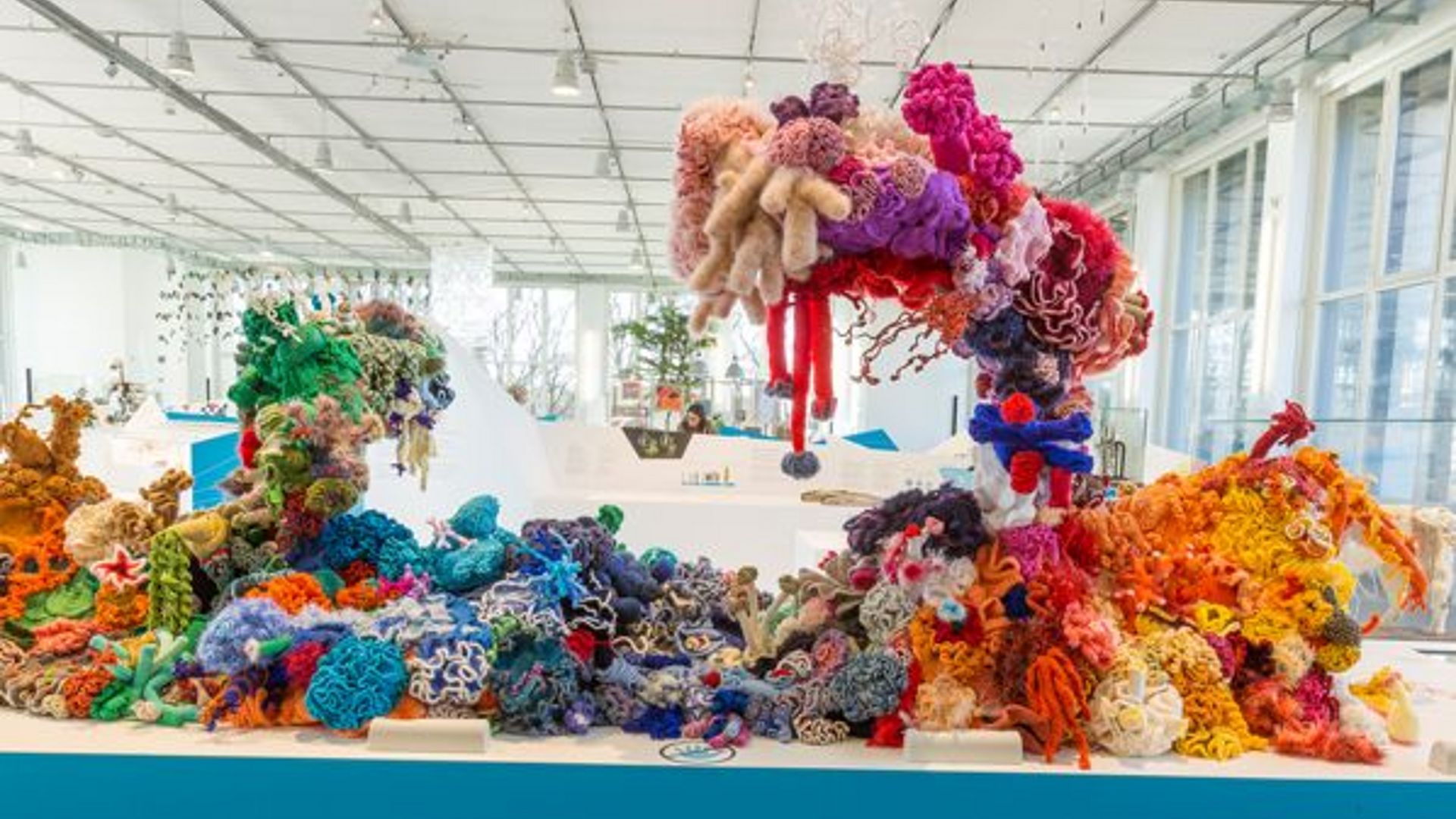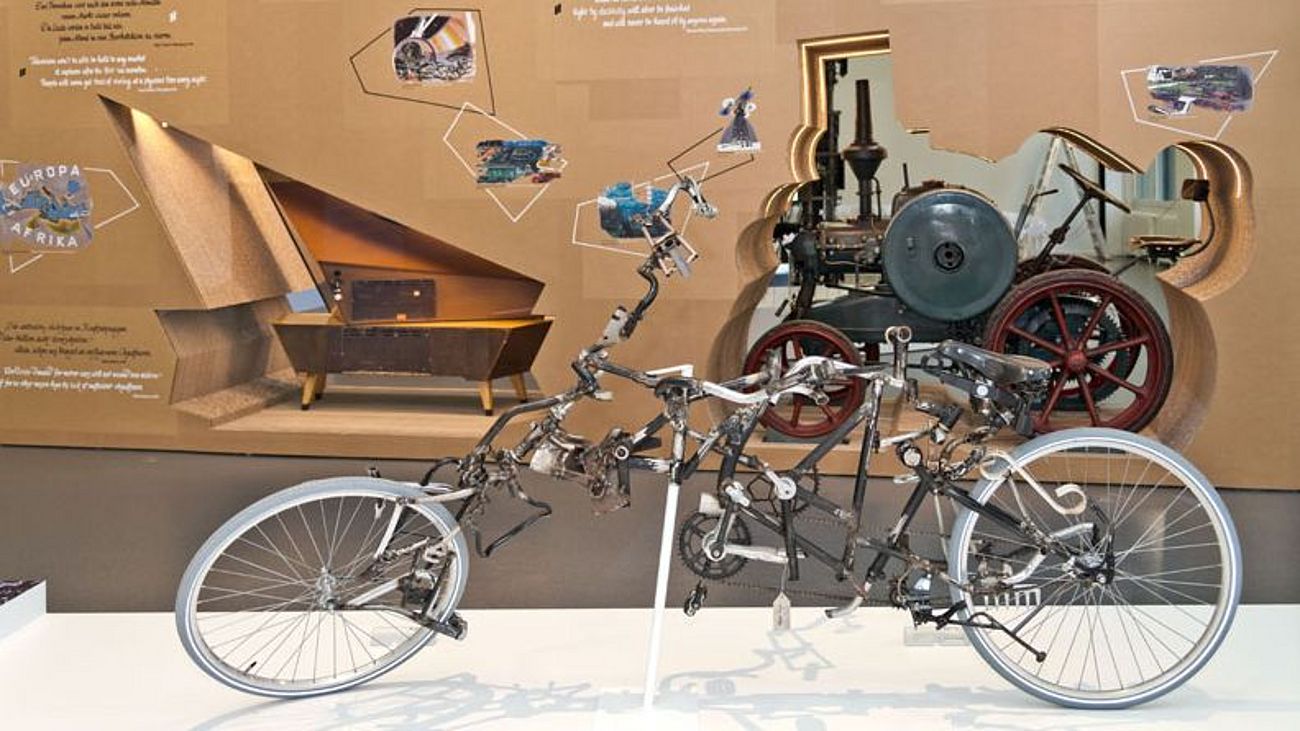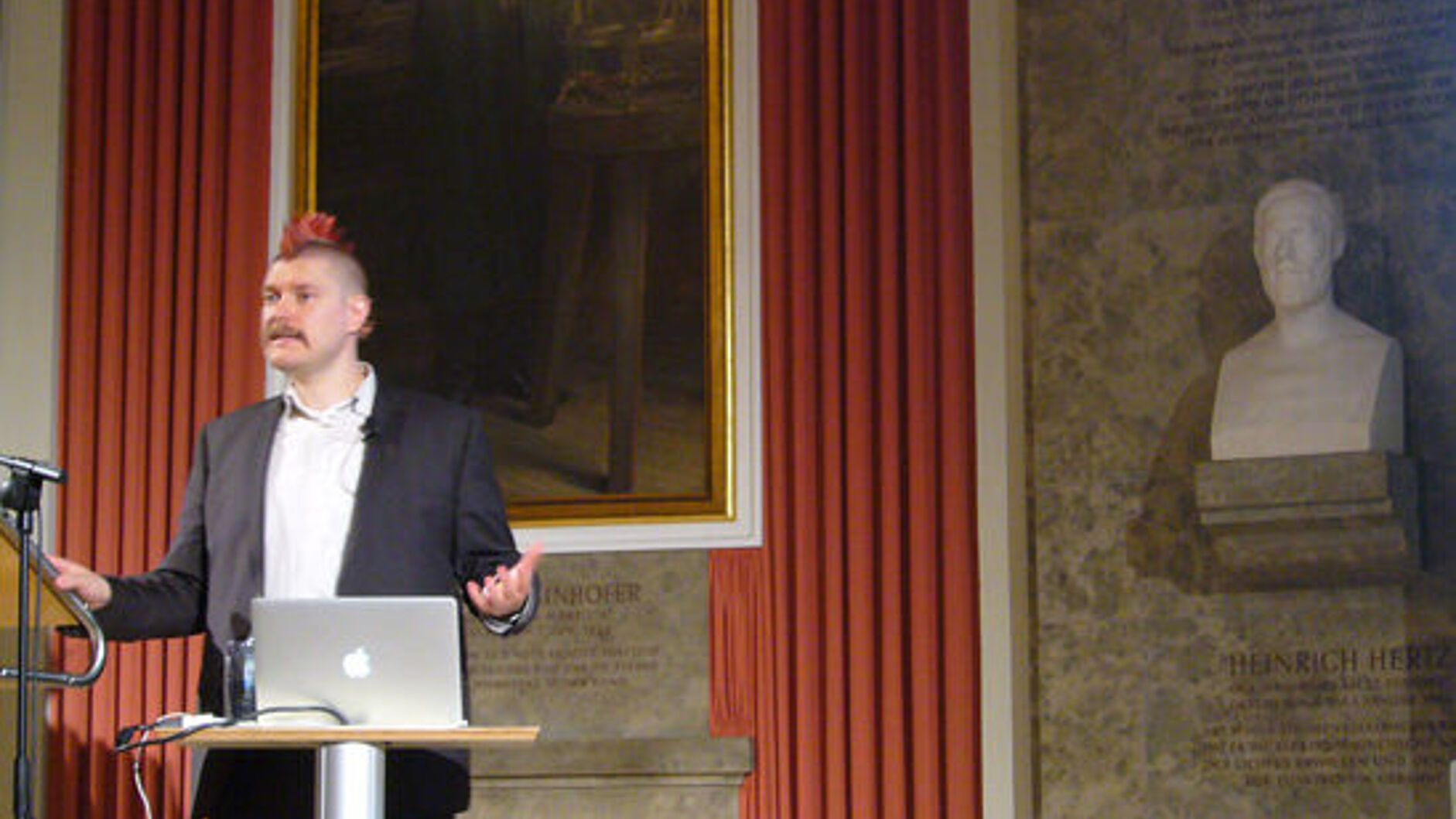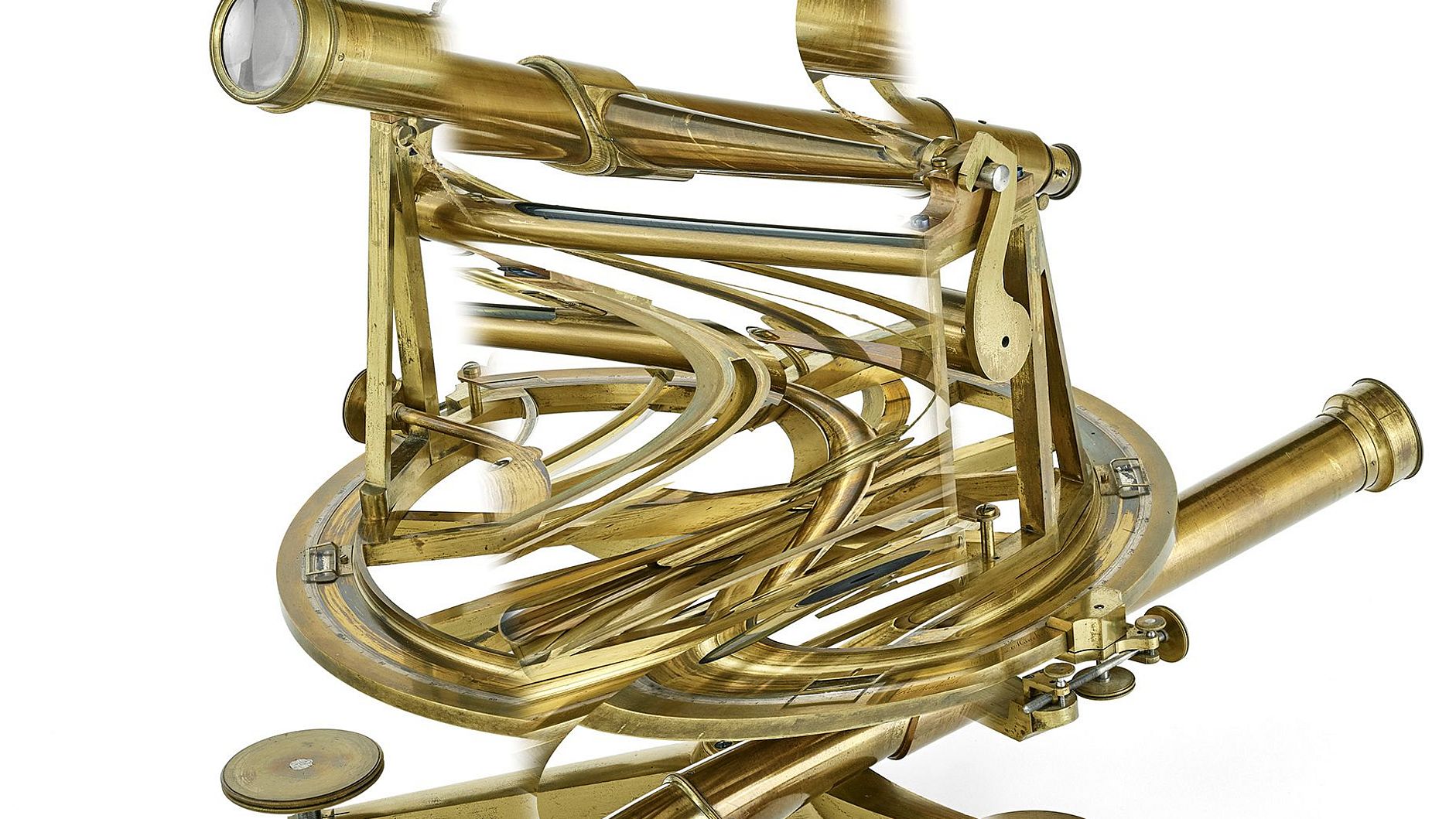Norrona Company kindly lent the Museum a blue jacket and handmade shoes completely produced with recycled material, to be exposed at the Anthropocene exposition. Norrona Company’s project gave birth to a clothing range made of recycled products. They collected over 70000 plastic bottles in Norway and sent the bottles in a journey halfway around the world, to be turned into fabric and then sewn into jacket. This process resulted into 100% recycled clothes.
“Our society will be defined not only by what we create, but also by what we refuse to destroy”, the artist Victor Sonna says. Originally from Cameroon, Sonna expresses his artistic vision collecting old bicycle scraps around the street of his new hometown in the Netherland. He offers a new view of the city, a generative place for creative and new ideas to face environmental problems that are rising in the Anthropocene.
